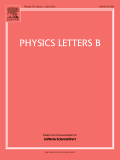
PHYSICS LETTERS B
Scope & Guideline
Catalyzing Groundbreaking Discoveries in Physics
Introduction
Aims and Scopes
- Nonlinear Dynamics and Solitons:
The journal extensively covers research related to solitons, rogue waves, and breather solutions in various nonlinear systems, highlighting their applications in fluid dynamics, optics, and plasma physics. - Nanofluid and Magnetohydrodynamic Flows:
A significant portion of the publications addresses the behavior of nanofluids and their interactions under magnetic fields, focusing on their thermal properties and applications in engineering and technology. - Quantum Mechanics and Quantum Information:
Research on the quantum realm, including quantum entanglement, teleportation, and the behavior of quantum states in various systems, is a core focus, reflecting the journal's commitment to advancing quantum physics. - Materials Science and Properties:
The journal publishes studies on the structural, electronic, and optical properties of new materials, including nanostructures and hybrid materials, contributing to advancements in material science. - Computational Physics and Modeling:
Numerous studies utilize computational methods to analyze complex physical systems, providing insights through numerical simulations, theoretical models, and advanced mathematical techniques. - Thermodynamics and Heat Transfer:
Research on thermodynamic processes, heat transfer mechanisms, and their implications in various physical systems, including nanofluids and materials under extreme conditions, is prominently featured. - Biophysical and Biological Applications:
The journal includes studies that connect physics with biological systems, exploring bioconvection, drug delivery mechanisms, and the physical interactions within biological fluids.
Trending and Emerging
- Advanced Nanomaterials and Their Applications:
Research on the synthesis, characterization, and application of advanced nanomaterials, including hybrid nanofluids and nanocomposites, is trending as their significance in energy and environmental technologies grows. - Multiscale Modeling and Simulations:
There is an increasing focus on multiscale modeling approaches that combine theoretical, computational, and experimental methods to analyze complex physical phenomena across different scales. - Quantum Technologies and Information Science:
The exploration of quantum technologies, including quantum computing, quantum cryptography, and quantum simulations, is emerging as a significant area of research, reflecting the growing interest in harnessing quantum mechanics for practical applications. - Thermal Management and Heat Transfer Innovations:
Innovative studies on thermal management systems, particularly those utilizing nanofluids and advanced materials, are gaining prominence due to their applications in energy efficiency and thermal control. - Interdisciplinary Applications of Physics:
Research that bridges physics with other disciplines, such as biophysics, materials science, and engineering, is on the rise, indicating a trend towards collaborative and interdisciplinary approaches. - Nonlinear Optical Phenomena:
The study of nonlinear optical phenomena, including solitons and their applications in communication and imaging systems, is increasingly popular, reflecting advancements in optical technologies.
Declining or Waning
- Classical Mechanics and Fluid Dynamics:
There is a noticeable decrease in publications focused solely on classical mechanics and basic fluid dynamics, as the journal shifts toward more complex and interdisciplinary studies involving nanofluids and advanced materials. - Traditional Solid State Physics:
Research that falls strictly within the realm of traditional solid-state physics, such as basic crystal structures and properties without innovative applications or advanced methodologies, appears to be less frequent. - Single-Disciplinary Studies:
Papers that focus solely on one discipline, without interdisciplinary approaches or applications, are declining. The journal increasingly favors studies that integrate multiple disciplines, such as combining physics with materials science or biology. - Static or Non-Dynamic Systems:
Research on static systems or non-dynamic models is waning as the journal emphasizes dynamic systems, interactions, and real-time applications in various fields. - Low-Impact Theoretical Models:
Theoretical models that do not demonstrate significant implications or applications in real-world scenarios are less likely to be accepted, reflecting a shift towards impactful and applicable research.
Similar Journals
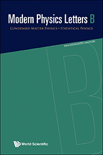
MODERN PHYSICS LETTERS B
Pioneering insights in the realms of condensed matter and statistical physics.MODERN PHYSICS LETTERS B, published by World Scientific Publishing Co Pte Ltd, is a pivotal journal in the fields of Condensed Matter Physics and Statistical and Nonlinear Physics. With an ISSN of 0217-9849 and an E-ISSN of 1793-6640, this journal has been a prominent platform for innovative physics research since its inception in 1996, catering to a global audience of researchers, professionals, and students alike. Its impact is reflected in its Scopus rankings, with a commendable position in the 65th percentile for Statistical and Nonlinear Physics and the 54th percentile for Condensed Matter Physics. Despite its classification in the Q3 quartile, MODERN PHYSICS LETTERS B is dedicated to advancing knowledge through rapid dissemination of high-quality research, thus playing a critical role in shaping future developments in its disciplines. Published in Singapore, the journal encourages contributions that address contemporary challenges and breakthroughs in physics, fostering an engaged scholarly community.
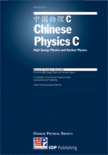
Chinese Physics C
Elevating Knowledge in Nuclear and Astrophysical SciencesChinese Physics C is a premier, peer-reviewed journal published by IOP Publishing Ltd, dedicated to advancing knowledge in the fields of Astronomy and Astrophysics, Instrumentation, and Nuclear and High Energy Physics. With an impressive impact factor reflecting its standing in the Q1 quartile across multiple categories, this journal serves as a vital resource for researchers, professionals, and students seeking to engage with cutting-edge developments and experimental findings. Since its inception in 2008, Chinese Physics C has fostered significant collaborations and discussions within the global physics community, enabling easy access to high-quality research through its open access options. Operating from the United Kingdom with a commitment to excellence, this journal not only showcases high-impact papers but also encourages innovative methodologies and interdisciplinary approaches, solidifying its role as an essential platform for dissemination and dialogue in the rapidly evolving landscape of physics.

International Journal of Mathematics and Physics
Advancing Knowledge through Collaborative ScholarshipThe International Journal of Mathematics and Physics, published by AL-FARABI KAZAKH NATIONAL UNIVERSITY, serves as a vital platform for scholars and researchers engaged in the fields of mathematics and physics. With an ISSN of 2218-7987 and E-ISSN 2409-5508, this journal has been committed to disseminating high-quality research since its inception in 2019, and will continue to do so until 2024. Although currently not an open access journal, it provides valuable insights into a diverse array of topics, receiving considerable attention within the academic community. The journal holds a Q4 ranking in categories such as Computer Science Applications, Miscellaneous Mathematics, and Miscellaneous Physics and Astronomy, highlighting its emerging role in these fields. With Scopus rankings placing it at the lower percentiles, the objective of the journal is to foster growth and offer a constructive forum for ideas that will drive innovative research and discussions. The International Journal of Mathematics and Physics is essential for anyone looking to explore the intersections of these disciplines and advance their knowledge through collaborative scholarship.
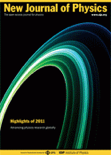
NEW JOURNAL OF PHYSICS
Unveiling the universe, one discovery at a time.NEW JOURNAL OF PHYSICS, published by IOP Publishing Ltd, is a prestigious open-access journal that has been at the forefront of the physics community since its inception in 1998. With an impact factor that places it in the Q1 category of Physics and Astronomy (miscellaneous) and a commendable ranking of #49 out of 243 in the general physics and astronomy category according to Scopus, this journal is recognized for its significant contribution to advancing research in the field. The journal caters to a broad scope of topics, providing a platform for the dissemination of cutting-edge research findings and innovative theoretical explorations. Operating from the United Kingdom, it offers a truly international perspective, making its contents accessible and impactful to a global audience. With robust open-access options, the NEW JOURNAL OF PHYSICS ensures that research findings are freely available, promoting collaboration and knowledge sharing among researchers, professionals, and students alike. This commitment to accessibility, combined with its high-quality content, makes it an essential resource for anyone engaged in the physics community.

PHYSICA SCRIPTA
Exploring the Depths of Condensed Matter PhysicsPHYSICA SCRIPTA, established in 1970 and published by IOP Publishing Ltd, is a prestigious journal dedicated to the broad fields of physics, encompassing topics such as atomic and molecular physics, condensed matter physics, and mathematical physics. With an impressive commitment to advancing scientific knowledge, it holds a significant standing in the academic community, evidenced by its Q2 and Q3 rankings across various categories in 2023. The journal is instrumental for researchers, professionals, and students seeking to disseminate and engage with high-quality research, fostering collaboration and innovation within the field. Although it currently does not offer open access options, its robust editorial standards ensure the dissemination of impactful studies, contributing to its rising citation metrics. Published from the United Kingdom, PHYSICA SCRIPTA continues to be a vital resource for contemporary developments in physics, paving the way for future discoveries.

ANNALES HENRI POINCARE
Illuminating the Path of Discovery in Dynamic Physical SciencesANNALES HENRI POINCARE is a prestigious journal published by Springer International Publishing AG, dedicated to advancing research in the fields of Mathematical Physics, Nuclear and High Energy Physics, and Statistical and Nonlinear Physics. With an impressive Q1 ranking in its respective categories as of 2023, this journal is recognized as a vital resource for academic researchers, professionals, and students engaged in frontier studies of theoretical and applied physics. The journal's commitment to high-quality peer-reviewed articles promotes significant contributions to the understanding of complex physical phenomena, making it essential reading for anyone seeking to stay abreast of developments in these dynamic fields. Additionally, ANNALES HENRI POINCARE offers open access options to enhance the visibility and accessibility of groundbreaking research, underscoring its role in fostering collaborative scientific inquiry and innovation. Since its inception in 2000, it has continually provided a platform for scholars worldwide to disseminate their findings and engage with the broader scientific community, thus establishing itself as a cornerstone of academic literature.

Thermophysics and Aeromechanics
Pioneering Research at the Intersection of Science and EngineeringThermophysics and Aeromechanics, published by PLEIADES PUBLISHING INC, is an esteemed journal dedicated to advancing the fields of aerospace engineering, energy engineering, modeling and simulation, as well as nuclear and high energy physics. With an ISSN of 0869-8643 and E-ISSN 1531-8699, this journal serves as a vital platform for researchers and professionals working at the intersection of thermophysics and aeromechanics, delivering cutting-edge research, reviews, and case studies. Despite its current position in Quartile Q4 across multiple categories, including aerospace and energy engineering, it provides a unique opportunity for emerging ideas in these domains to gain visibility and impact. The journal's convergence of diverse scientific disciplines is critical for fostering innovation and technological advancements, making it an essential resource for students, practitioners, and academics alike. In this era of rapid scientific development, Thermophysics and Aeromechanics plays a pivotal role in disseminating knowledge and facilitating interdisciplinary collaboration among a global audience.
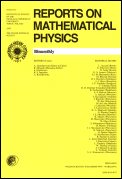
REPORTS ON MATHEMATICAL PHYSICS
Pioneering Discoveries in Mathematical PhysicsREPORTS ON MATHEMATICAL PHYSICS is a distinguished journal published by PERGAMON-ELSEVIER SCIENCE LTD, focusing on the intricate interplay between mathematics and physics. Established in the United Kingdom, this journal has been contributing to the academic community since its inception, publishing significant research findings that explore the theoretical underpinnings of physical phenomena. With an ISSN of 0034-4877 and an E-ISSN of 1879-0674, the journal maintains a consistent publishing history, converging research from 1970 to 2024. It is currently ranked Q3 in both Mathematical Physics and Statistical and Nonlinear Physics categories, reflecting its commitment to maintaining a high standard of scholarly work. Although it lacks Open Access options, its targeted audience of researchers, professionals, and students will find invaluable insights into advanced mathematical methods, statistical applications, and innovative approaches in physics. With its esteemed reputation and critical role in the field, REPORTS ON MATHEMATICAL PHYSICS continues to be an essential resource for those seeking to deepen their understanding of mathematical applications in physical systems.
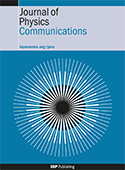
Journal of Physics Communications
Where Physics Meets Open Access ExcellenceJournal of Physics Communications, published by IOP Publishing Ltd, serves as a significant platform for the dissemination of innovative research in the realm of physics and astronomy. Since its inception in 2017, this Open Access journal has fostered a collaborative environment, allowing researchers, professionals, and students to share their findings and ideas without barriers. With an ISSN of 2399-6528, the journal has established its credibility in the academic community, achieving a ranking of Q3 in the 2023 category of Physics and Astronomy (miscellaneous), as well as a respectable position in Scopus with a rank of #122 out of 243 in its field. The journal's focus is on bridging theoretical concepts and practical applications, making it an essential resource for those engaged in the evolving landscape of physics. The Journal of Physics Communications not only aims to advance knowledge but also to inspire interdisciplinary collaboration, inviting contributions from diverse areas within physics. Authors and readers alike will find this journal particularly beneficial to stay updated on emerging trends and innovative research.
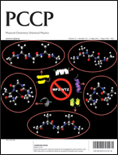
PHYSICAL CHEMISTRY CHEMICAL PHYSICS
Catalyzing Innovation in Physical Chemistry and Chemical PhysicsPhysical Chemistry Chemical Physics is a premier interdisciplinary journal published by the Royal Society of Chemistry, dedicated to advancing the fields of physical chemistry and chemical physics. With an impressive impact factor and categorized in the Q2 quartiles for both Physical and Theoretical Chemistry and Physics and Astronomy, this journal serves as a vital platform for the dissemination of high-quality research findings from 1999 through 2024. Based in the United Kingdom, the journal is committed to providing open access to its articles, enhancing the visibility and accessibility of research to a global audience. Researchers, professionals, and students alike are encouraged to contribute to this esteemed journal, ensuring impactful discussions and significant advancements in the understanding of chemical and physical phenomena. With strong Scopus rankings underscoring its relevance, Physical Chemistry Chemical Physics stands out as an essential resource for specialists striving to innovate and excel within these dynamic fields.